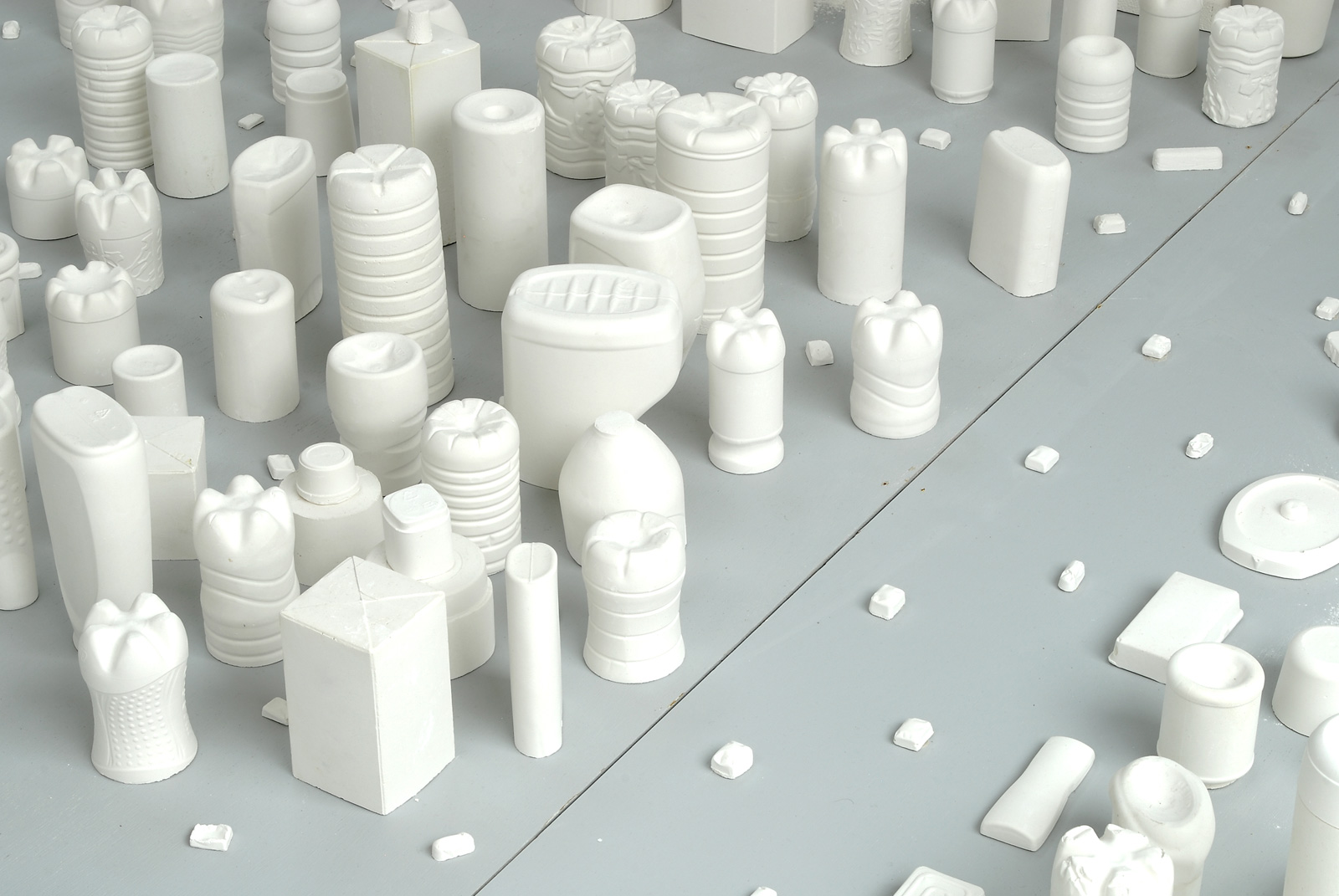The plaster miniature city Dystopia makes the waste problem visible and touches loosely on architecture and urban planning.
Patrick van Vught (1979) had realized in Utrecht a large-scale artwork in cooperation with students of the Amadeus Lyceum. Together they poured off all kinds of packages of cookies, phones, detergent and washing machines in plaster. With these plaster ′building blocks′ the artist composed a town of 70 m². The plaster metropolis makes the waste problem palpable. Patrick van Vught had turned his daily annoyance over empty packaging thrown carelessly on his balcony by students into a work of art.
This artwork deserved more attention. Part of the artwork was exhibited in 21rozendaal – a recycled textile factory. The exhibition took place at the time of the Copenhagen climate summit. In addition to ecological motives the white mini city also arose from thoughts about the design and structures of cities, their street patterns and housing types. In Dystopia, the opposite of utopia, apartment buildings, luxury villas, suburbs, factories and even Greek temples can be discerned. The district Roombeek in which 21rozendaal is located, offered an interesting context for this artwork as the area is rebuilt since the fireworks disaster in 2000. The presentation gave the possibility to compare the design of Roombeek to that of Dystopia. Parts of the old street pattern in Roombeek are maintained and various housing types, from townhouse to farmhouse, can be distinguished.
I transformed the unused upper floor of 21rozendaal into exhibition space. Here I gave young Dutch artists under the heading 1UP the chance to make a first solo. Besides Patrick van Vught it were Koen Taselaar, Jeroen Rijnders, Das BilT and Evelien Lohbeck.













